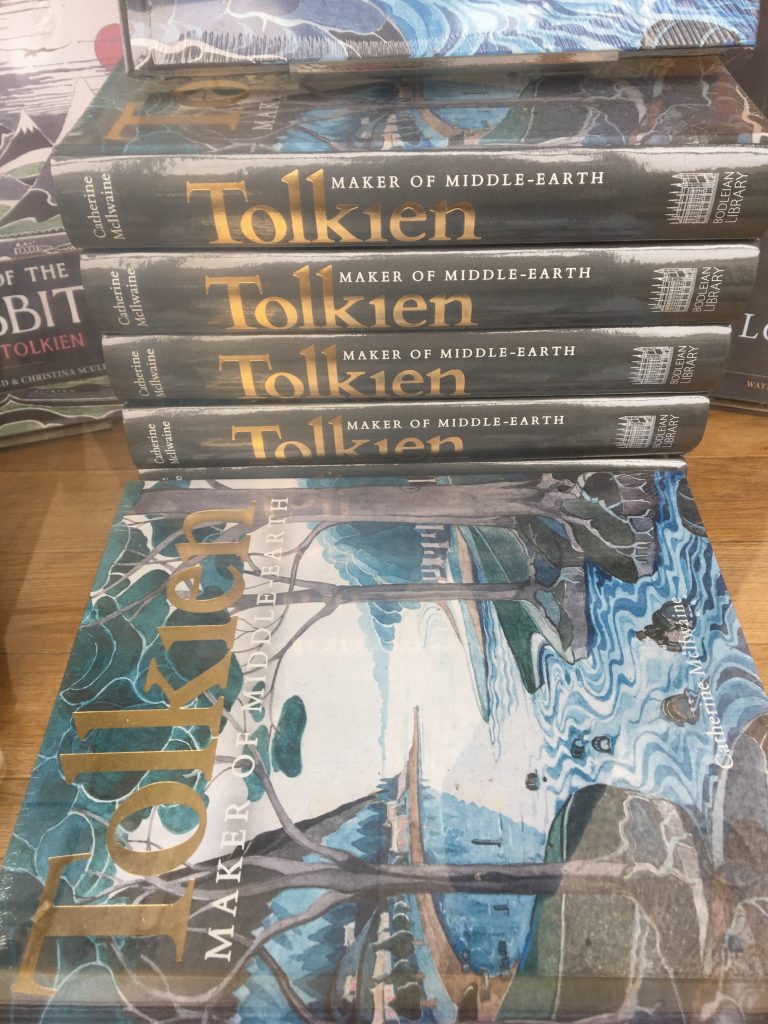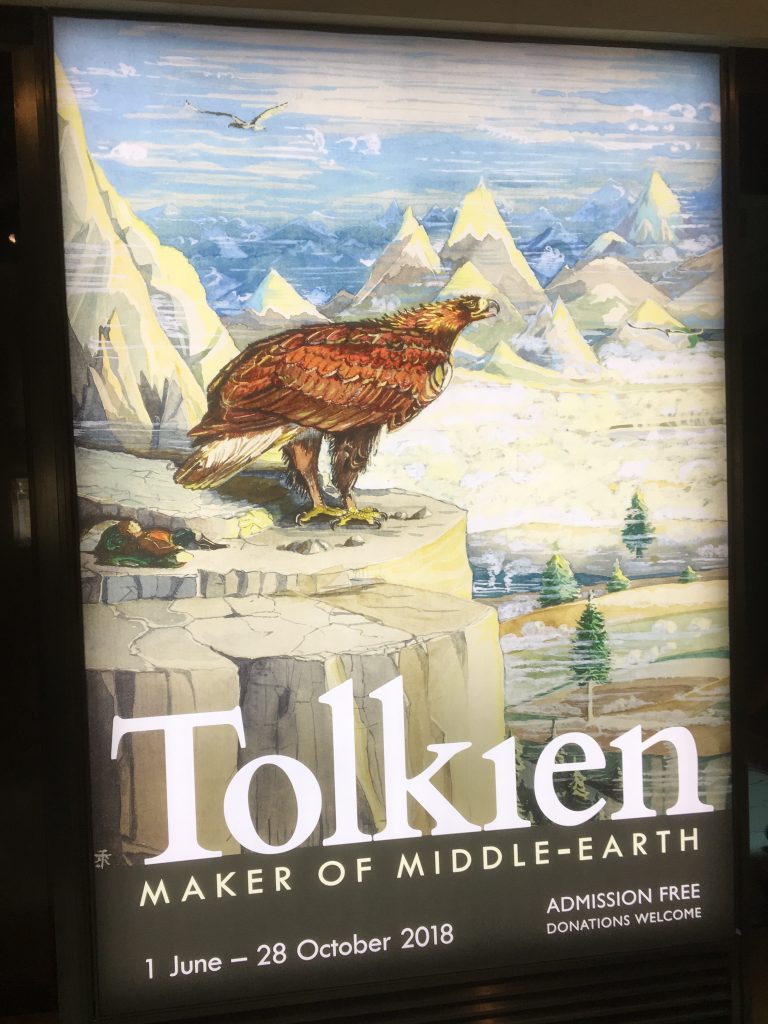
Estimate, compare, distinguish, discuss, and trace to its principle sources…Everything.
—J.R.R. Tolkien
The above quote is from a spoof exam that J.R.R. Tolkien created for his fellow Inklings—the group of writers at Oxford, including the Narnia Chronicles author C.S. Lewis, with whom Tolkien met regularly to discuss their literary works. The original handwritten version of this “exam” was displayed as part of the Tolkien: Maker of Middle-earth exhibition put on by the Bodleian Library in Oxford in 2018. The exhibit included, amongst many other treasures, Tolkien’s original watercolors for The Hobbit, his little writing desk and paints (with a cartoon of Smaug drawn on a slip of paper), a table-sized 3D/ holographic projected animated map of Middle-earth, letters, doodles, rare Tolkien family photographs and, as my son declared happily soon after we entered the exhibition chamber: “Dad, they’ve even got Tolkien’s tobacco pipes!”
I think that many of us who love to travel are craving the roads that go “ever ever on” like Bilbo so wistfully recited about in both The Hobbit and The Lord of the Rings. Since Covid lockdown has prevented my family and myself from pretty much going anywhere ever on during the last six months other than to the grocery store, I wanted to share the story about the trip we made two years ago to Oxford, England for that incredible Tolkien exhibition at the Bodleian Library.
(If you aren’t a diehard Tolkien fan this story will probably be as boring as an Ent’s tale, so dear readers, this is your chance to bail out. Or if you want to read my travel guide post from 2016 for doing a one-day speed-run of Tolkien’s Oxford, click here.)
The exhibition’s once-in-a-lifetime experience cemented my love for Tolkien in purest mithril, as well as cultivated my longstanding infatuation for the ancient and magnificent city of Oxford—a place I had first visited in the early 80s as a wide-eyed thirteen-year-old from the dreary suburbs of the Pacific Northwest on a quest to see the city where my hero J.R.R. Tolkien had spent most of his adult life; and which I have been back to visit again half a dozen times over the past 4 decades.
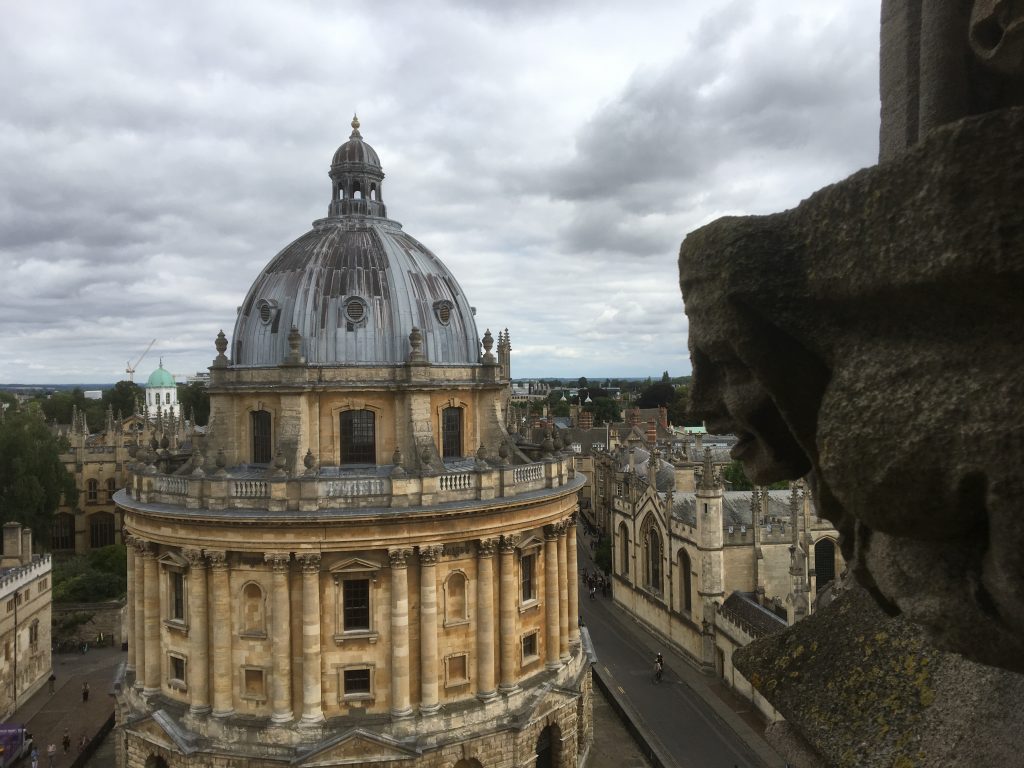
When my wife and I first heard there was going to be a major Tolkien exhibition at the Bodleian Library, we decided without hesitation to go there and take the kids. She and I had visited “The city of dreaming spires” together twenty years ago. (By the way, is there a city on the planet with a more evocative nickname than Oxford’s? The place where I grew up should have been called “The town of reeking paper mills.”) So I quickly made the various travel arrangements and, most importantly, ordered our free tickets to the exhibition from the Bodleian’s online reservation system—4 visitations on 4 separate days. (We actually ended going more times than that, squeezing in at odd times of the day when there weren’t huge lines.)
Our kids, who were 13 and 8 at the time of this trip had never been to England. And they were incredibly excited because they were (and still are) massive Tolkien fans. I had indoctrinated them each into Middle-earth by reading The Hobbit and The Lord of the Rings out loud to them over the years, and these nightly readings to them will always be some of my fondest memories. By the way, it takes about 7 months to read LotR out loud to a child if you’re doing half an hour of bedtime reading every night, and I have done this twice. So, my kids knew far more about Tolkien than I did at their respective ages.
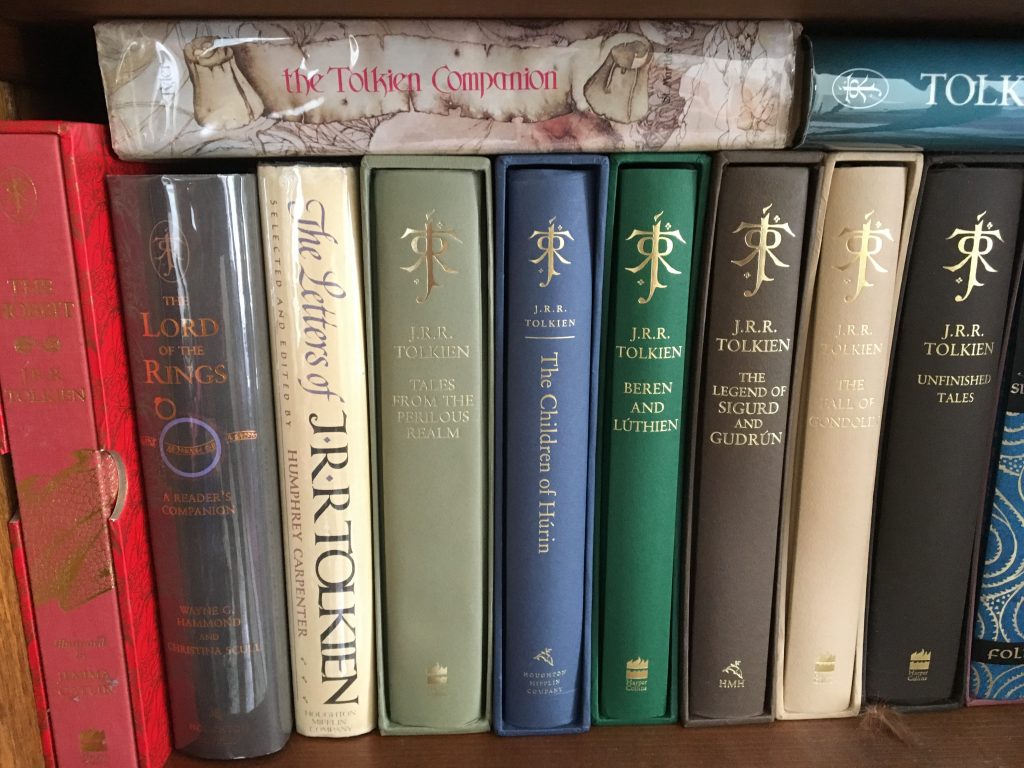
The trip to get to Oxford was long: a nearly ten our flight, then a 3 hour plus wait at customs (with a son who was heinously sick after gorging himself on a breakfast of Fuego Takis and Sour Patch Kids), a Heathrow Express train that broke down en route stranding us on the high speed rails for over two more hours in a sweltering car with no air conditioning (it was 95 degrees/35 celsius that day), another delayed train to get to Paddington Station, and then a final train to Oxford. (Note: The fastest and easiest way to get to Oxford from Heathrow is the plain old bus or “coach” as they are called in the UK which I took the following year from the airport to Oxford without a hitch). And when we finally got to Oxford in the afternoon-—nearly 24 hours after we had left Seattle—worn out, cranky, hungry and sleep deprived, we were met with Airbnb shenanigans that forced us to relocate to a hotel with quite possibly the last suite available that could accommodate a family of four in the insanely crowded city of Oxford at the height of tourist season. It cost a small fortune in dragon gold.
But it was all worth it.
That first visit to the exhibition the day after arriving was simply overwhelming, and I was glad I had planned for us to stay in Oxford for a week so we could really soak everything up without being rushed. The exhibit room at the Bodleian was small—less than a thousand square feet. But it was crammed with rare Tolkien ephemera, some of which I had never even heard of before, let alone seen.
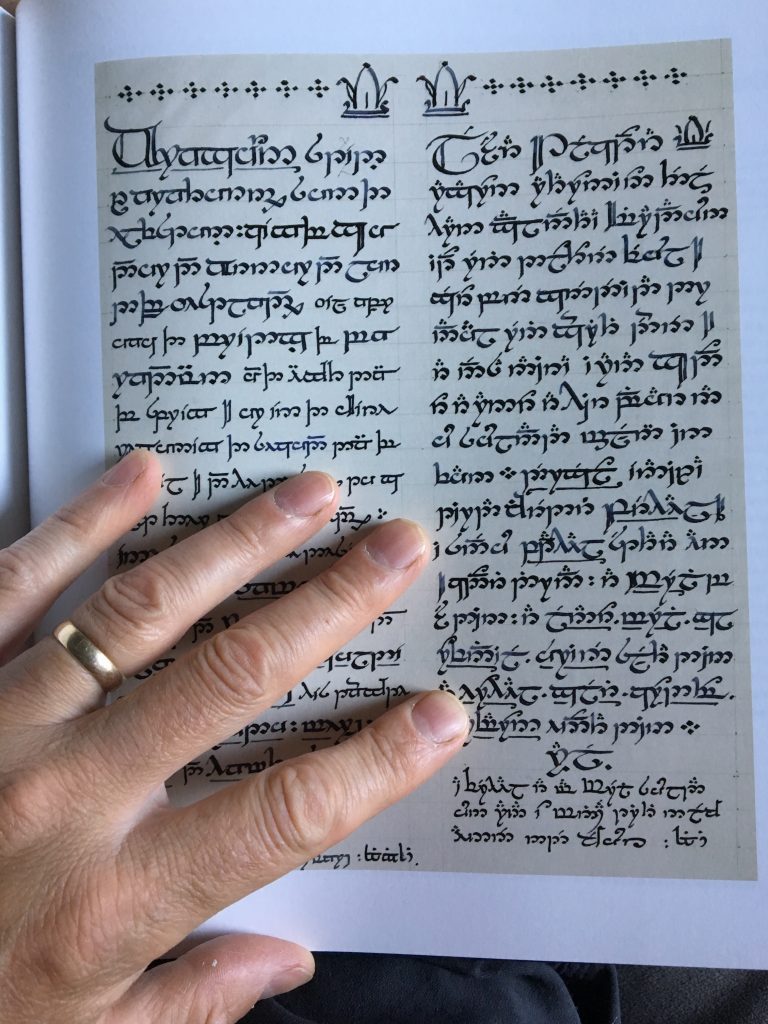
One of the artifacts that blew my mind was a document created by Tolkien: a letter written by King Elessar (Aragorn’s Gondorian name) to Sam, penned in the most beautiful Elvish script, and sent to Sam years after the events of the War of the Ring. Before the Maker of Middle-earth exhibition, this letter had never before been shown to the public (a facsimile of this might have been planned to be included in the original publication of The Return of the King, but for some reason it was never used and is now part of the Tolkien collection at Marquette University, donated by Tolkien’s son Christopher).
Or to see the row of Tolkien’s The Hobbit watercolors under glass—all of the author’s paintings from the original publication. It was amazing to peer at these up close—you could see the printers’ alignment marks still pasted to the margins. I especially loved the painting of Hobbiton, still vibrant after nearly a hundred years, with its tiny details of hobbit hole doorknobs and a minute road sign bearing the name “Hill” pointing toward Bag End.
And the maps! To see the first map of the Shire sketched in 1938 with notes on the back about a hobbit called Bingo Baggins setting off for an adventure with his two nephews and the inchoate thought “Ring must eventually go back to Maker.” And Tolkien’s original drawing of the Mines of Moria. Or his very modern-looking cover art sketch (again, never used) of a sinister Sauron with his outstretched hand seeking for the ring.
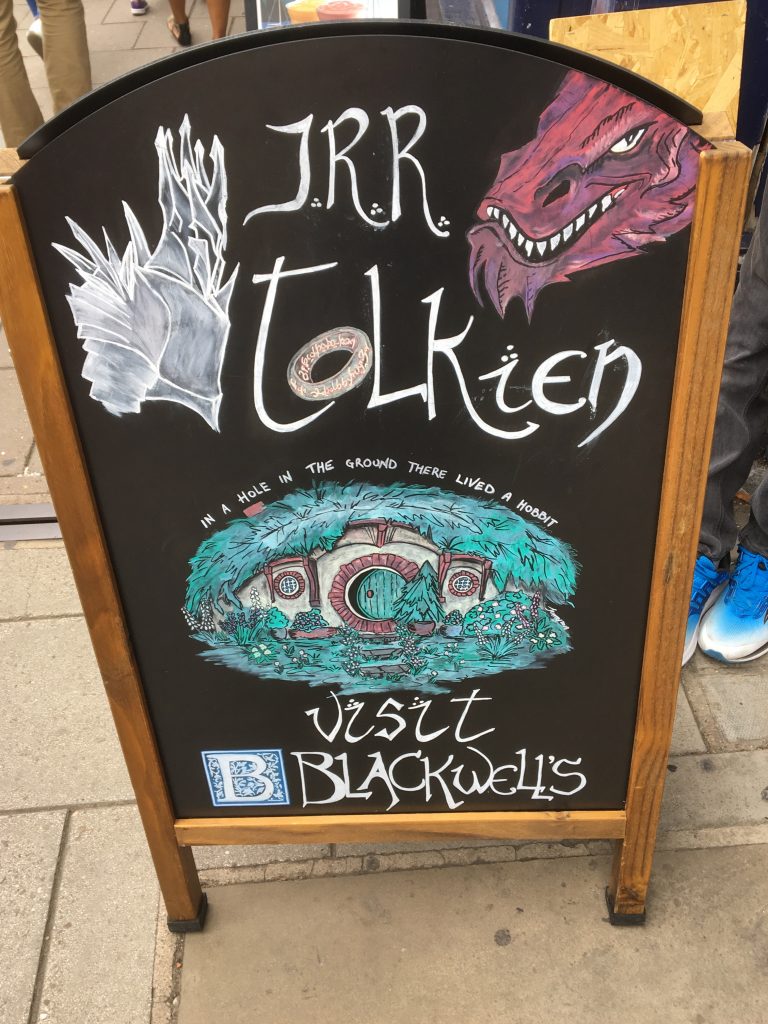
But I was gobsmacked by a simple sheet of paper: Tolkien’s original hand-written title page with the title The Magic Ring with a single line drawn through it; and beneath it the words The Lord of the Rings written in Tolkien’s elegant script. With a relic like this you get to be a witness to literary history and the potential alternate pathways the story could have taken. (Did you know that the character of Strider was originally written as a hobbit?) And did I mention that the original One Ring to Rule Them All verse was also on display? Meticulously inscribed by Tolkien in English and Tengwar!
In between visits to the exhibition there were many other places to explore in and around Oxford (both Tolkien-inspired and otherwise), and copious amounts of food to be eaten (English breakfast, fish and chips, etc.). We hoofed it so many miles every day that my son starting calling the town “Walksford.”
One day we took the incredible guided tour of the Merton College Library—the oldest “continuously functioning” library used by university students in the entire world. Merton is the college where Tolkien became a professor in 1945, and I could just imagine him climbing the old worn stone stairs to peruse the tomes in this over 600-year-old temple for bibliophiles. Afterwards, we stood in the cool shadow of the Fitzjames Arch, reading the scores of names of Merton College students who had died during the First World War etched into the wall. Tolkien must have walked past here every day and thought of all the dear friends he had lost in that catastrophe.
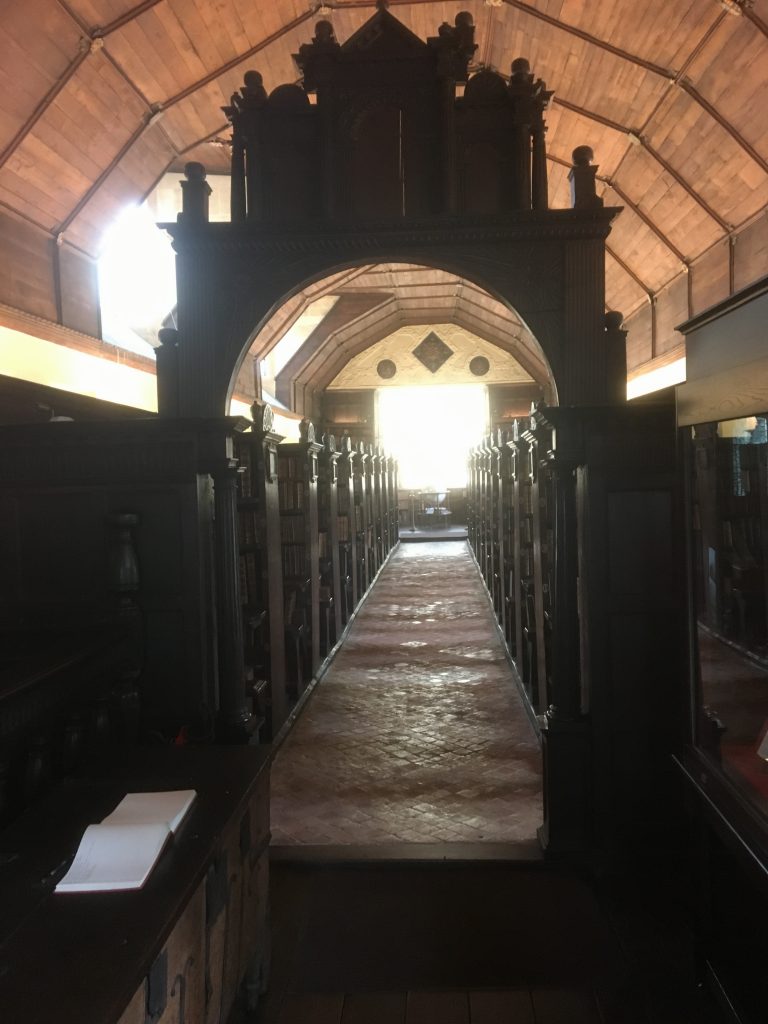
We made several visits to the Oxford Botanic Garden where Tolkien used to stroll to from Merton College in order to visit his favorite tree (which sadly was destroyed in a storm several years ago). We also took a trip to Wolvercote Cemetery to pay homage at Tolkien’s and his wife Edith’s grave. Here, standing under umbrellas in a summer rain, I recited Bilbo’s poem “The Road Goes Ever On.” And then we read the notes that people had left to moulder on the mound—messages from fans who had come there before us who wanted to leave message about how much Tolkien’s works had changed their lives for the better forever. We ate at the Eagle and Child pub in the snugs (the cozy wood paneled seats at the front of the pub) where the Inklings used to hang out and chat. We even walked to 20 Northmoor Road—the house where Tolkien wrote The Hobbit and much of The Lord of the Rings—and read the blue plaque embedded in the wall stating that Tolkien had lived there.
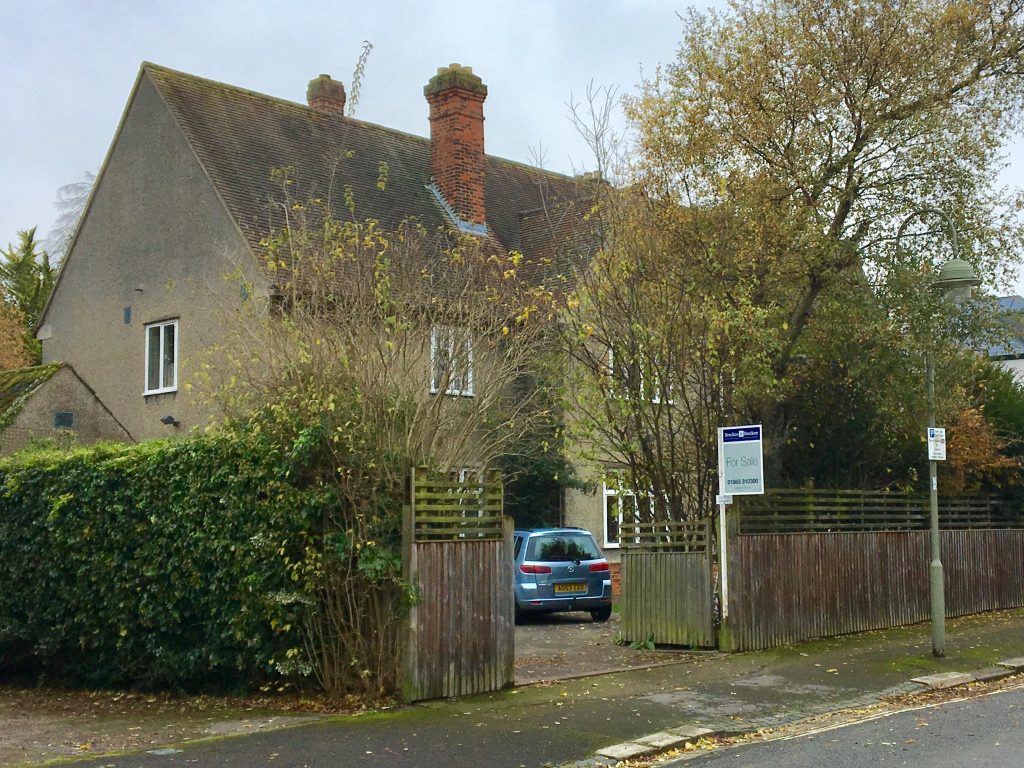
Back at the exhibition, there was always something new to study that we had missed on a previous visit. Like the manuscript page from the exciting chapter The Ride of the Rohirrim written in Tolkien’s superb hand—the section near the end where Theoden calls on his riders to head for Gondor, and he seizes a horn from his banner-bearer and blows such a blast that he bursts the horn! You could almost see the energy and the force radiating from the words. Tolkien himself said about The Lord of the Rings “It is written in my life-blood, such as that is, thick or thin; and I can no other.” Yes. I understand. The exhibit proved that it was indeed written in his life-blood, and it also showed without a shadow of a doubt that John Ronald Reuel Tolkien was a literary genius as well as a masterful artist, designer and even creator of fonts and his own logo.
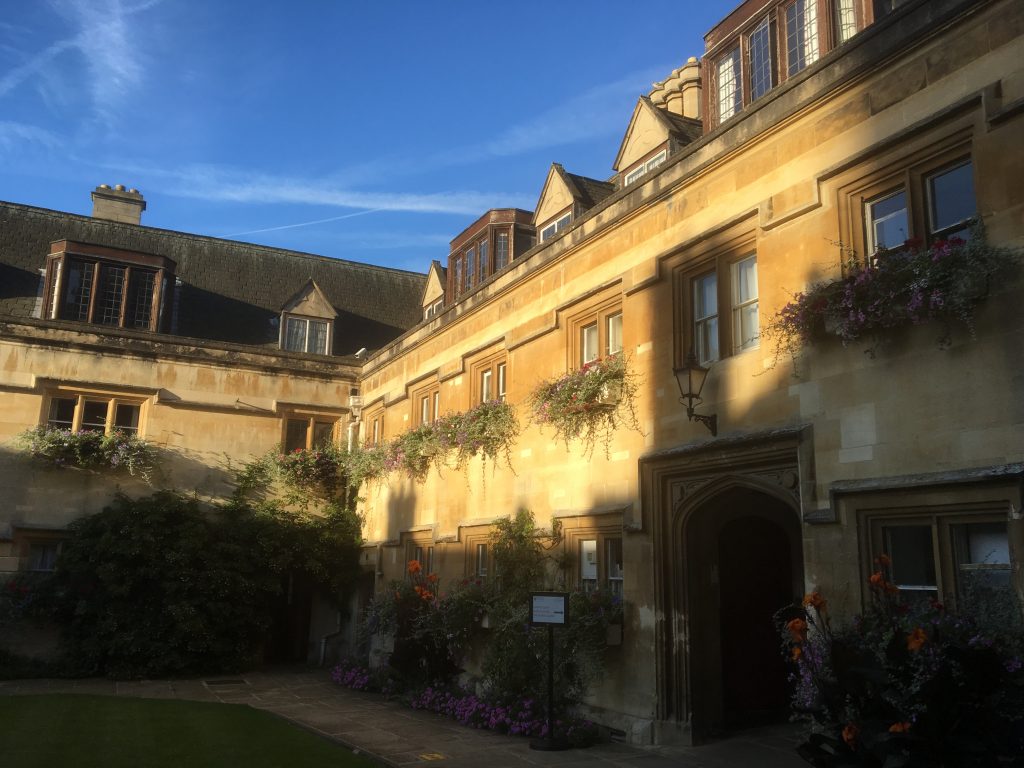
On the final day of our Oxford stay, we got up very early and walked to Pembroke College where Tolkien’s career as a Fellow in the city of dreaming spires began (he had been a student at Exeter College a few blocks away from Pembroke before the Great War). The door warden said that they didn’t usually let tourists peek inside the quad, but since we were Tolkien fans, she let us have a quick look. You can see for yourself that the place, like all of Oxford, radiated a kind of magic. I could just imagine Tolkien walking across this quad in the morning light, mumbling excitedly to himself “In a hole in the ground there lived a hobbit.”
I highly recommend the exhibition’s companion book Tolkien: Maker of Middle-earth by Catherine McIlwaine and published by The Bodleian Library.
